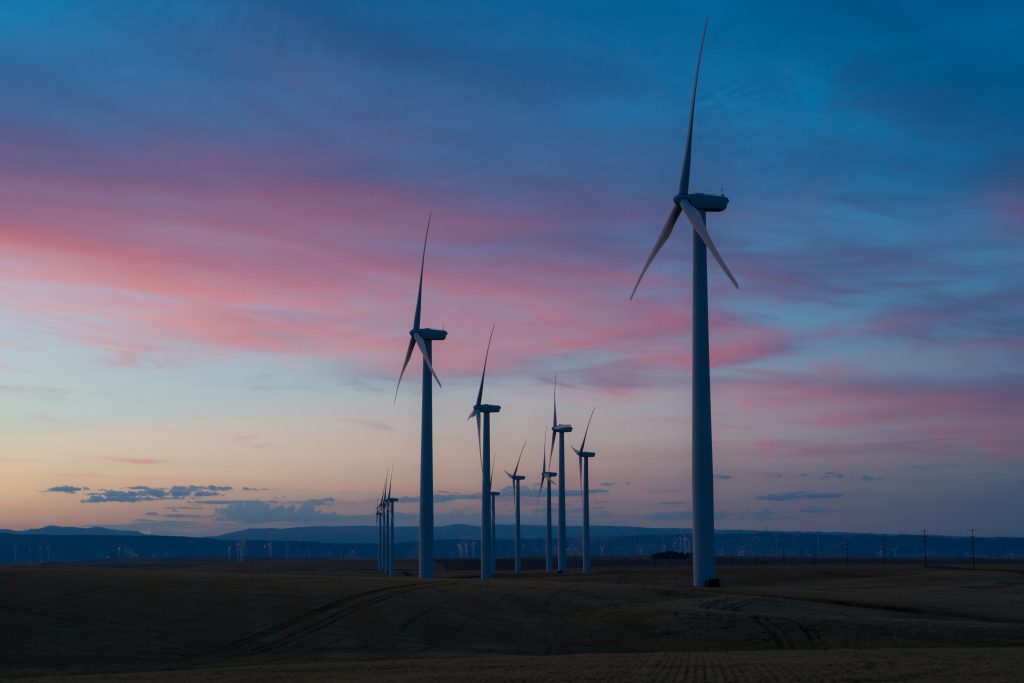
To reduce the transmission of Covid-19, many people and organisations have adopted remote and digitalised styles of communication and work. The daily usage of smartphones, laptops, TVs and tablets has soared since the start of the pandemic. Research by the Statistica Research Department (2021) quantifies these trends, calculating that smartphone and laptop usage have both increased by 46% since Covid-19 hit the United Kingdom. Email and video-conferencing technologies are now vital to maintaining regular employee communication under systems of remote working. But sadly, IT use has implications for the carbon footprint of individuals’ and the organisations we work for.
The environmental impacts of remote working are multifaceted. Less commuting significantly reduces greenhouse gas emissions, with transport accounting for 25% of UK carbon emissions. Nevertheless, it is also important to recognise how storing and transmitting the data that powers the internet produces carbon. This means that the increased use of information technology, such as email and Zoom, also increases a company’s carbon footprint. Despite this, the ways in which companies can and should mitigate such carbon production remain relatively absent from ESG strategy discourse.
64 million unnecessary emails are sent daily within Britain. Whilst unactionable thank you emails seem harmless, the fact remains that 2 grams of CO2 are emitted per text-based email, and that the associated carbon output increases to 19 grams when a small attachment is added. Here, we can recognise the importance of OVO Energy’s ‘Think Before You Thank’ agenda: if every British citizen sent one less unnecessary and unactionable ‘thank you’ email per day, we would save 16, 433 tonnes of carbon per year. Integrating a similar agenda into a corporate ESG strategy would not only reduce a company’s carbon footprint but increase productivity by cutting time spent constructing unnecessary email replies.
Remote working has led to a sharp increase in the use of video conferencing applications, such as Zoom. Whilst virtual meetings may produce less carbon than commuting to a physical meeting, research conducted jointly by Perdue, Yale and MIT Universities highlights that 1 hour of video conferencing still emits 150-1,000 grams of carbon dioxide and requires 2-12 litres of water. However, there are simple ways to reduce video conferencing carbon emissions. For example, turning your camera off during an hour-long call could reduce carbon emissions by 96%. Reducing video quality would also reduce energy consumption, yet it might be more useful for companies to evaluate the necessity of meetings: would an email suffice?
As the UN COP26 climate change summit seeks to identify innovative ways to cut carbon emissions, examining everyday corporate behaviour becomes pertinent. Therefore, and in the context of remote working within a global pandemic, it can be argued that a consideration of IT and internet usage must be key to a company’s ESG strategy. Fortunately, The Carbon Literacy Project provides a structured way in which organisations can promote an awareness of ‘everyday’ and IT-generated carbon emissions. By offering Carbon Literacy Training, the project teaches employees how to work in more environmentally conscious and sustainable ways. 1700 UK organisations, including ITV, University of Leeds, BBC and the New Charter Group have offered Carbon Literacy Training to their staff.

Integrating Carbon Literacy Training into an ESG Strategy can have tangible benefits in terms of helping companies to reduce their environmental impact. Promoting an awareness of the carbon produced by everyday activities can also transform employee culture by creating a ‘carbon consciousness’.
Visit The Carbon Literacy Project page to find out more.
Bibliography
Statistica Research Department (2021) Device usage increase due to the coronavirus in the UK in 2020. Statistica [online] 22 October. Available at: https://www.statista.com/statistics/1121168/device-usage-coronavirus-in-the-uk/ [Accessed 22 October 2021].
Neill, P. (2020) Revolutionising the commute is key to reducing CO2 emissions. Airqualitynews.com [online] 22 October. Available at: https://airqualitynews.com/2020/09/22/revolutionising-the-commute-is-key-to-reducing-co2-emissions/ [Accessed 22 October 2021].
OVO Energy. (2019) ‘Think Before You Thank’: If every Brit sent one less thank you email a day, we would save 16,433 tonnes of carbon a year – the same as 81,152 flights to Madrid. OVO Energy [online] 22 October. Available at: https://www.ovoenergy.com/ovo-newsroom/press-releases/2019/november/think-before-you-thank-if-every-brit-sent-one-less-thank-you-email-a-day-we-would-save-16433-tonnes-of-carbon-a-year-the-same-as-81152-flights-to-madrid.html [Accessed 22 October 2021].
eCo2 Greetings. (2021) The Carbon Footprint of Email vs Postal Mail. eCo2 Greetings [online] 22 October. Available at: https://www.eco2greetings.com/News/The-Carbon-Footprint-of-Email-vs-Postal-Mail.html [Accessed 22 October 2021].
Obringer, R, Rachunok, B, Maia-Silva, D, Arbabzadeh, M, Nateghi, R and Madani, K. (2021) The overlooked environmental footprint of increasingn Internet use. Resources, Conservation and Recycling, 167, 921-3449.
Carbon Literacy Project. Available at: https://carbonliteracy.com
